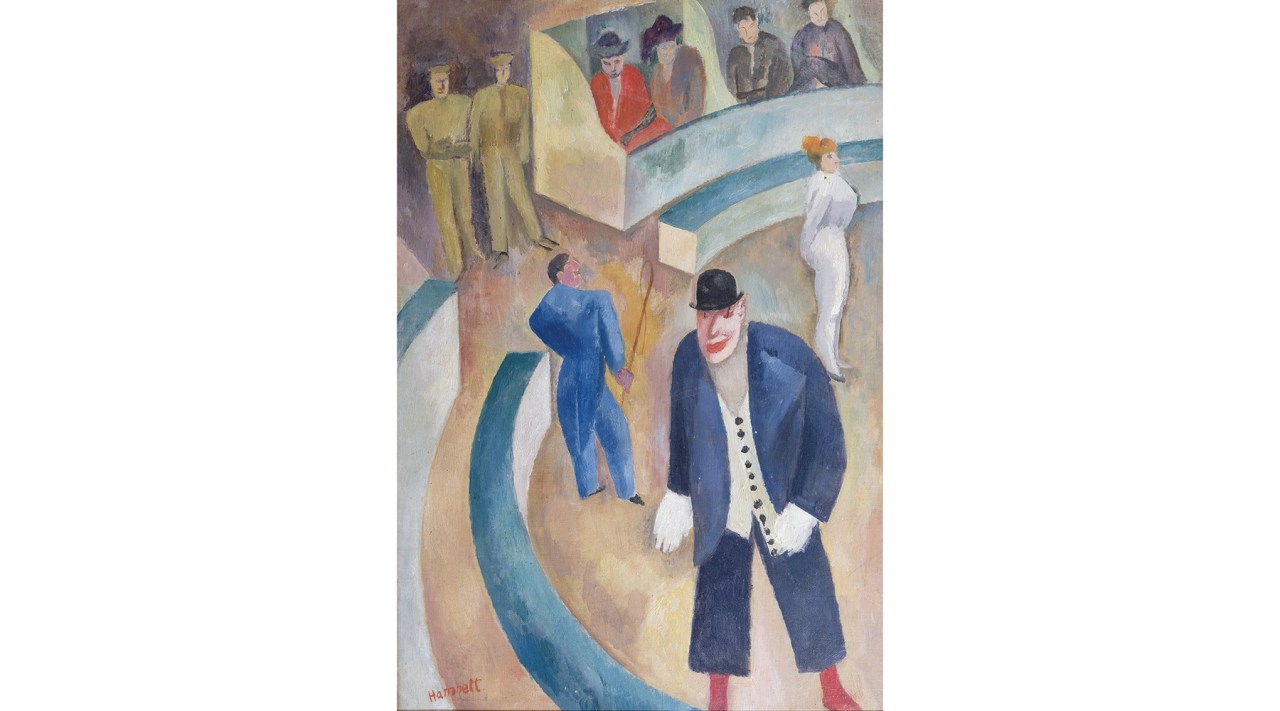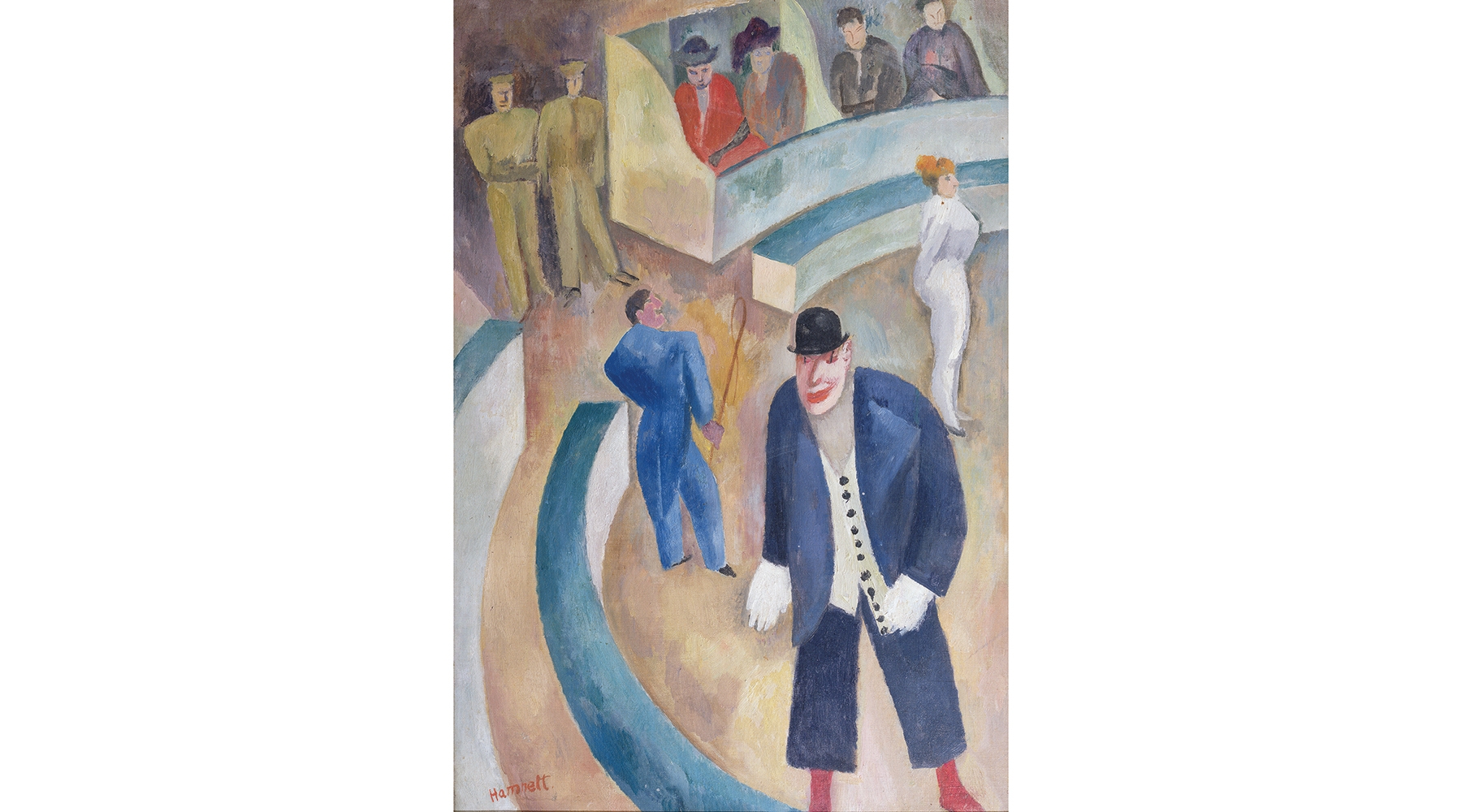Nina Hamnett is in vogue again. She is the subject of a new pocket biography, no. 7 in Eiderdown Books’s Modern Women Artists series, and her first ever retrospective is now open at Charleston Farmhouse’s gallery space. I confess I didn’t know much about her before this resurrection, but she is now one of my favourite 20th-century artists.
In this bucolic gallery space, where cows can be heard bellowing, her portraits are at last hanging together, like a cocktail party finally regrouped. The colours are subtle, beautiful without being decorative; as the co-curator Alicia Foster explains, Hamnett’s use of colour is ‘meaningful, incisive’. Her circus paintings are thick with atmosphere, joy and menace, and technical feats — white kid gloves, or the brushed nap of a top hat — are pulled off with expert insouciance. No wonder Walter Sickert viewed her work with ‘einen Kolossalen Respekt’ and Roger Fry praised her to the rooftops.
Some of the portraits are like short stories. The dancer Rupert Doone, elegant as an orchid, is wearing make-up — a painted face painted. The former dancer Lady Constance Stuart-Richardson, who before the war ‘had a marvellous figure and danced with not much more on than a tiger skin’ (as Nina wrote in her memoir), is shown looking soulful, earnest, unworldly, and fully covered up. At its debut in 1917, viewers were ‘bitterly disappointed’.
One’s eye is just getting into Hamnett’s wit, and the touches of Omega Workshop about her backdrops, when the show ends. That’s it. Twenty oils, and about the same number of sketches. Whatever went wrong? Previous generations knew all about it; she was famously the witty memoirist and ‘Queen of Bohemia’ who ended up a dissolute fixture of the Colony Room. This show — and the new biography — barely mention any of that.








Comments
Join the debate for just £1 a month
Be part of the conversation with other Spectator readers by getting your first three months for £3.
UNLOCK ACCESS Just £1 a monthAlready a subscriber? Log in